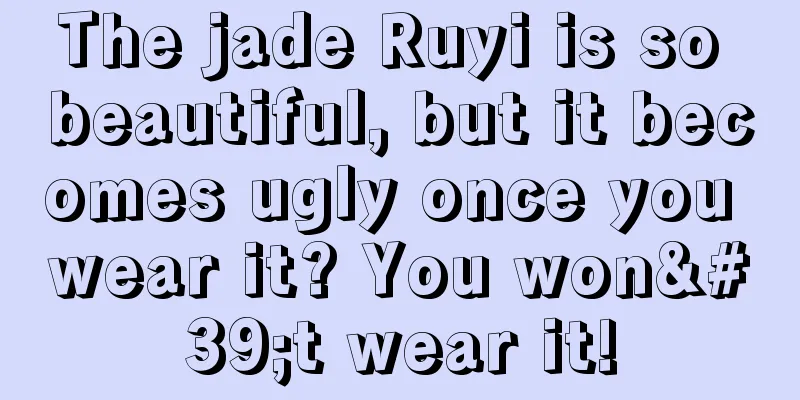Is the jadeite genuine? First you have to make sure it is really emerald.

|
However, in the process of collecting, do you really know that what you have in your hand is real jade? Regardless of whether it is natural or optimized, make sure that what you received is not an ordinary stone that is used as a substitute, then talk about other things. Similar low-end dyed gemstones Dyed green agate Natural green agate is mostly impure green, dark green, and brown-green. Brightly colored green agate is mostly artificially dyed or a misname for green chalcedony. Natural agate is darker green. Key points for identification: 1. Green agate has uniform color and obvious parallel color bands. The polished surface is smooth, without orange peel effect and without grainy structure. 2. The relative density is smaller than that of jadeite. When you weigh it, you can obviously feel that it is lighter than jadeite. The larger the agate, the lighter it feels. Dyed Quartzite Dyed quartzite appears in large quantities in markets and street stalls, and is called "Malaysian jade", "Korean jade", etc. These names are used to confuse people. The most common are ring faces, followed by jade buttons and necklaces. Key points for identification: 1. Use a flashlight to shine close to the sample from the side, and the granular structure can be seen with the naked eye. Zooming in reveals the loofah-like structure. 2. Early dyed quartzite was reddish under the Charles filter, but now most of it does not change color. This identification result is for reference only. Stained Glass Imitation jade glass has a long history and is often referred to as "material ware" and "material stone" in the industry. Green glass imitating jadeite is more common in the market nowadays, and can be found in small tourist product markets and low-end gem or jade markets. Key points for identification : 1. The color of imitation jade glass is uniform. If there are color bands, they are usually arranged irregularly in a flowing state, unlike the color bands of agate which are arranged in parallel. 2. Bubbles are common in imitation jade glass. Although the bubbles in imitation jade glass with better modern technology are small, they can be seen with a 10x magnifying glass and a flashlight. Most of them are small pink-green balls. Green marble Dyed green marble is mostly used to make larger imitation jade products such as bracelets and carvings, and is mainly found in the low-end gem market. Key points for identification: 1. The dyed green marble is darker in color, with a bluish-green hue, and is slightly transparent to opaque. 2. The relative density of dyed green marble is small, and it feels similar to agate and is relatively light, especially in large pieces. 3. The texture of the green marble is loose. When you tap it gently, the sound is extremely dull, and the color is obviously distributed along the small cracks. Similar low-end natural jade Amazonite The color of aquamarine is only somewhat similar to jadeite, so the finished product is relatively easy to identify. Key points for identification: 1. The green color of amazonite is very different from that of jadeite. 2. The specific gravity of amazonite is small and can be used as a reliable identification feature. Xiuyu As a tremolite jade, Xiuyan jade has long played the role of a substitute for jadeite, ranging from small bracelet pendants to various large ornaments. Because they are both green jades, Xiuyan jade is much cheaper than jadeite. Key points for identification: 1. The biggest feature of Xiuyan jade is that its hardness is significantly lower than jadeite and it is easily cracked. However, this method is not suitable for normal identification. 2. Xiuyan jade has a distinct oily or waxy luster, while jadeite has a glassy or pearly luster. In terms of color and internal structure, Xiuyan jade is more yellow-green and somewhat gray, which is different from the pure emerald green "Cui" and the yellowish-brown "Fei" of jadeite. Similar mid- to high-end natural gemstones Translucent Emerald High-quality transparent emeralds are priced no less than fine jadeite. Similar to jadeite are translucent emeralds of poor quality. Among them, the small ring faces cut from translucent emerald are not easy to distinguish from jadeite. Key points for identification: 1. The polished surface of translucent emerald may have pits or undulations caused by cracks, but there is no orange peel effect. 2. The relative density of emerald is smaller than that of jadeite, and some emeralds turn red under a color filter. Prehnite Prehnite is smooth, crystal clear and lovely. The best ones have obvious contrast between the grains and the background color, are large and round, and can form a relief shape. It is sometimes confused with ice and glass jade. Key points for identification: 1. The color of prehnite is yellowish or bluish, mostly transparent to translucent, and the transparency of prehnite is relatively high. 2. Prehnite usually contains cotton-like inclusions, which are different from the fiber structure of jadeite. fcgc66 fcpf18 |
<<: The Importance of Handcrafted Jade Carving
>>: Jadeite Minimalism: Luxury is not just about complexity
Recommend
There are so many shapes of jade ring faces, which one is the most suitable?
As an indispensable part of jade jewelry, jade ri...
Have you noticed the three rules and five details in jade carving?
Many things are A product based on human aestheti...
How much do you know about the value of jade?
Maybe buying jade has become a habit for many peo...
Fu, the embodiment of Chinese culture, the inheritance of jade culture
Jade was introduced to China from Myanmar in the ...
When choosing jadeite, should we choose its quality or color?
Since jade is formed under geological action, it ...
The jade bracelet core of ordinary water quality is transformed into a "Xianglong Luohan" after processing to intimidate everyone
We all know that jade bracelets have to be made b...
Tips and steps for identifying jadeite with the naked eye, methods for identifying A-grade, B-grade, C-grade and D-grade jadeite
We start by classifying jade into A, B, C and D g...
The simplest way to identify jadeite, you will learn it in one go
The simplest way to identify jadeite, you will le...
The overlooked important quality of jade
When talking about jade, people can talk about it...
Jade appreciation brings the sleeping "stone" back to life!
Jade is a beautiful jade that has been sleeping f...
Don’t think that it’s OK if the jade identification certificate says it’s A-grade. This column is the most critical.
Many new jade lovers have this habit. They must g...
The greener the jade, the more valuable it is? Unexpected answer...
At present, green is indeed the most popular colo...
How to identify the quality of jadeite?
Among the many members of the jade family, jadeit...
Reveal the secrets of jadeite optimization processing!
Jadeite. We all know that the best jadeite is A-g...
Appreciation丨Different jade has different beauty
As the saying goes: "A plain surface does no...









